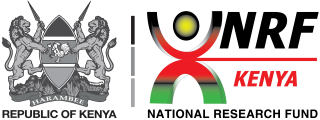Water Supply
Permanent URI for this collection
Browse
Browsing Water Supply by Funder "Egerton University"
Now showing 1 - 2 of 2
Results Per Page
Sort Options
Publication Household Water Handling Practices in the Arid and Semi-Arid Lands in Kenya(2019-04-13) Kurui, Edith J.; Ogendi, George M.; Nyawanga, Wilkister N. Moturi and Dishon O.; Kurui, Edith J.; Ogendi, George M.; Nyawanga, Wilkister N. Moturi and Dishon O.Utilisation of water from unimproved water sources coupled with inadequate access to sanitation can adversely affect human health. This study undertaken from November 2014 to March, 2015 sought to assess the household water handling practices and relate them to the prevalent diseases in Baringo Central and South, Kenya. A Household sanitary survey was conducted and questionnaires were administered to 100 household heads within the study area. The data was analysed using descriptive and inferential statistics. The results indicated that 72% of the households (n = 100) collected water for cooking and drinking from the water pans. Only 34% of the households treated water commonly using boiling (19%), filtration with cloth (2%), chlorine (11%) before using it for drinking. There was a positive correlation between methods used in accessing water from drinking water storage containers and water related diseases prevalent in the study area (p < 0.05). Household drinking water in the study area did not meet the WHO drinking water quality guidelines mainly due to poor handling practices at the household level. There is a need to promote water, sanitation and hygiene campaigns in the study area to prevent water related diseases at the household level.Publication REAL-TIME MONITORING OF WATER QUALITY IN LAKE NAKURU USING WIRELESS SENSOR TECHNOLOGY(Egerton University, 2022-04-01) Manene, FranklinWater quality monitoring in a water body is necessary to determine the major pollutants and their temporal variations. This in essence leads to informed decision-making on the appropriate mitigation measures and to determine the effectiveness of the existing water quality control measures. In this paper, a Low power communication technology for wide area networks (LORAWAN) is applied to connect sensor nodes to collect real-time data on Lake Nakuru waters. The system consists of sensors, a wireless sensor node, a communication network, and data visualization and cloud storage. The various sensors connected to the sensor node sense environmental parameters such as temperature, electric conductivity, pH, and dissolved oxygen. The wireless sensor node is deployed in a floating buoy on the lake and is powered by a solar panel. It sends the data to the gateway over the long range at a very low data rate with low power consumption. The cloud server applications such as Things network together with Thingsspeak are employed to receive, present, and store measured data.

